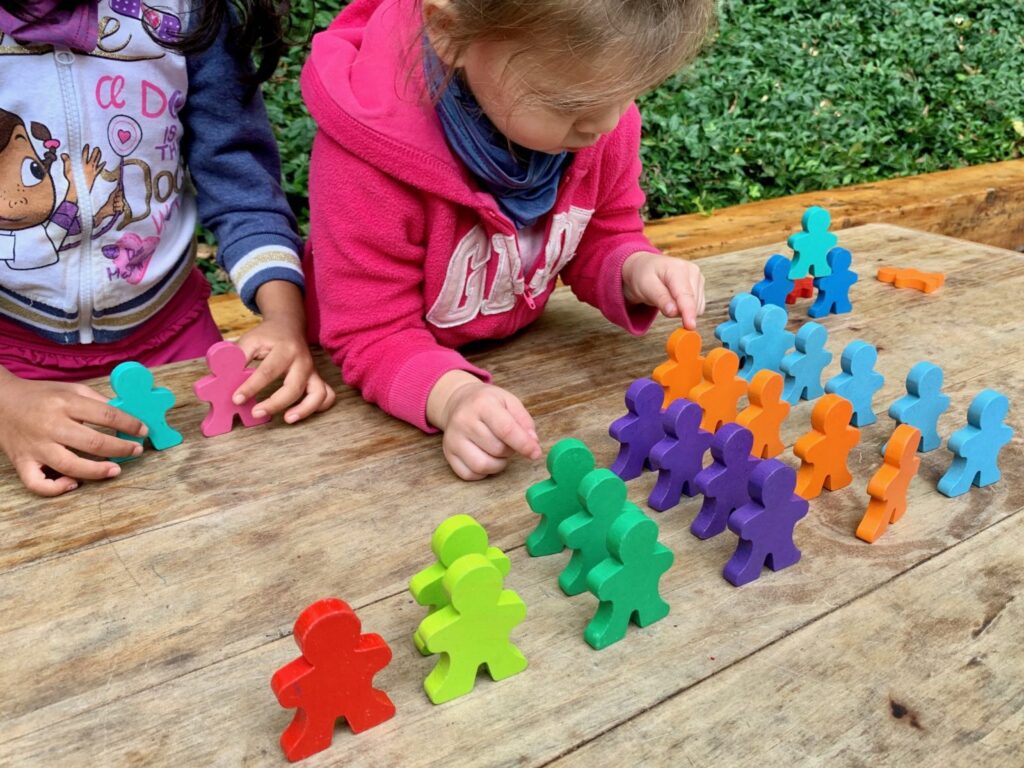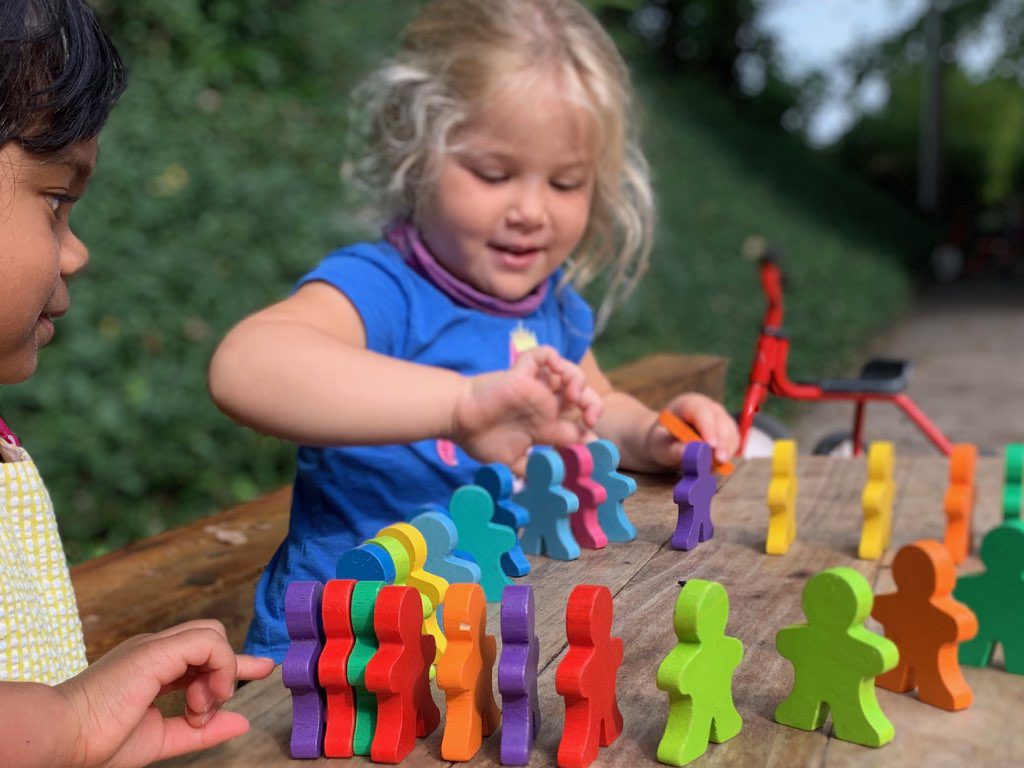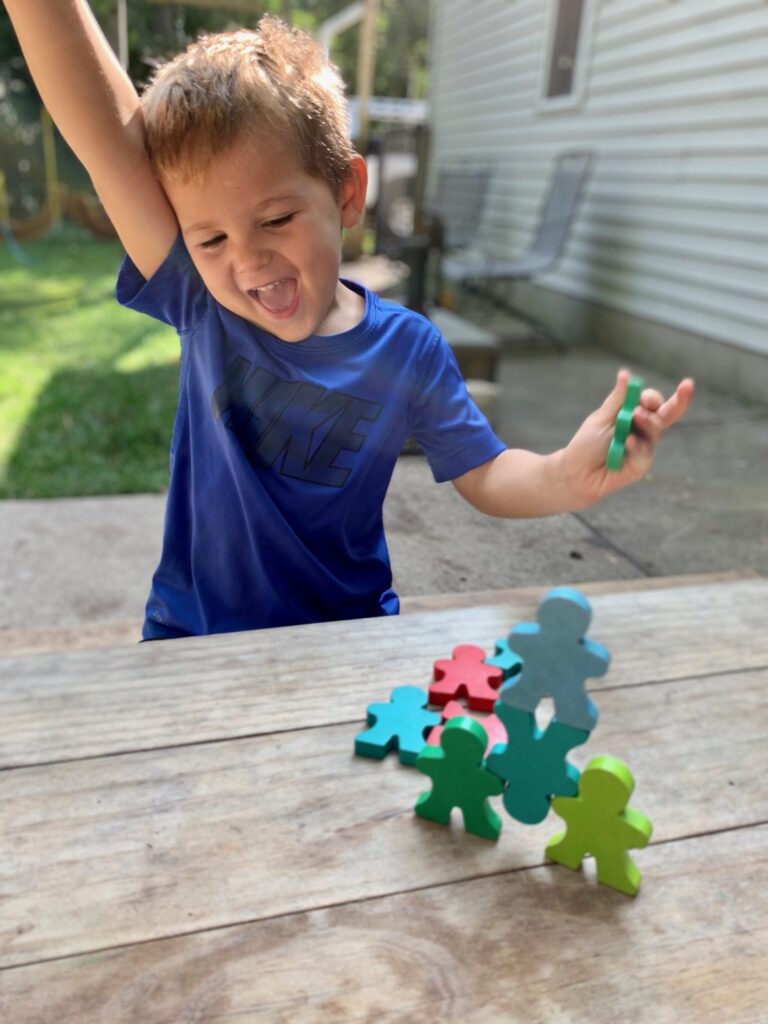STEM Play With People Blocks

"Look! The people blocks are in a line and they crash at the bottom, just like when we play on the slide!" says Evelyn as she flicks the first block and watches the whole line of people blocks fall, one figure after another.
Evelyn is having a lightbulb moment as she transfers knowledge gleaned from a previous play experience into her current hands-on learning. The chain-reaction domino fall during today's block play reminds Evelyn of waiting in line, forming a chain with her friends, and banging into them at the bottom of the slide.
Learning is not learning unless it is applied to something real. This is the key to unlocking an understanding of math, science and reading skills.

Evelyn is beginning to "see" and retain her playful moments. Friends join Evelyn at the table and our usually loud classroom grows quiet as the children engage in their own investigations with their favorite people-shaped blocks.
We love blocks for many reasons, but mainly because block play naturally adapts to the child's developmental level. Our morning of block play is a great opportunity for the children to hone their fine-motor and problem-solving skills while developing traits such as patience and determination.
Because the blocks (or dominoes) do not have to be evenly spaced to set up a chain reaction, this is an activity that even our two-year-olds can master.
It's also a wonderful opportunity to share math and science vocabulary words such as force, push, speed, predict, length, and probability. I toss these words out like seeds to be planted for future understanding. Some of the children grasp these vocabulary words immediately and incorporate them into their growing understanding of mathematical and scientific foundations.

"Hey! You're in my way!" shouts Eve as her line of block people intersects with Sally's.
I watch as Sally takes notice with an air of quiet concentration.
"I know! Let's make a square!" Eve shouts again before Sally can problem-solve her way out of the temporary crisis.
Suddenly, we have collaboration and a new plan. We are creating shapes and timing our push-offs to coincide with those of our friends. We have teamwork and data analysis to see if the plan will work, where the blocks will meet, and who will "win"!
Our morning of block people play takes off in many directions. The children are counting and creating lines and curves and talking about direction and using words like far, near, behind, in front of, and flat.
This is geometry! They are also using words like never, impossible, probably, and always—the language of data analysis and probability.

Jamie (above) is quietly working on a whole new investigation. He has moved on to stacking, which takes a bit more patience and determination. Frustration is setting in. He has a plan and knows what he wants to do, but the slightest movement on the table sends his circus act crashing down.
Jamie is our busy, rambunctious, always thinking, always moving friend. When he slows down enough to work on a project like this stacking challenge, he gives it the same 100% effort that he gives to nearly every activity in his day.
When we give children the materials and the time to explore and play, we can relax and remember that this is learning. This approach helps form the successful students and problem-solvers of the future!